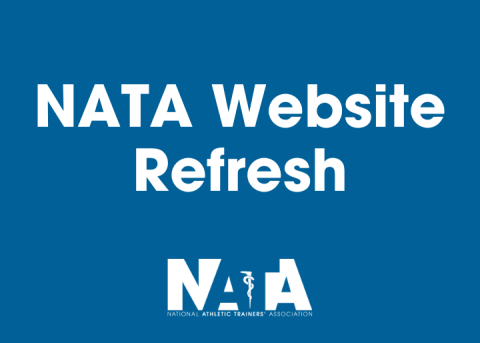
By Sara Richardson, MS, LAT, ATC
Chair, NATA COPA Private & Emerging Practice Committee

As evidenced in the July NATA News on entrepreneurship, there are several questions and opinions to starting your own business, especially as a health care provider. Athletic trainers interested in providing services independently or through contracted opportunities should understand their options for collecting payments and how those payments are charged.
Whether you are currently working in a fee-for-service business or you are considering starting one, there are a few options. How you decide to charge for services will come down to what’s best for you and your practice, but after reviewing the pros and cons of some of the most popular pay models, hopefully you are able to make that decision.
Here are some of the pay models available to athletic trainers and their details:
- Hourly Rate Billing: A set fee based on timeframe in which care is provided. This can be done in a few different ways. One option is that an hourly rate is set and then appointments are scheduled based on that rate, not on what is done during the appointment. Fees and services are based on time.
- Pros: You get paid what you are worth, it allows for stability in your business and customers are already familiar with hourly rate billing.
- Cons: It can lead to inefficient appointments due to low incentive to resolve the issue; it can produce results in a financial manner but perhaps not a patient-centered manner; and it can cause customer uncertainty if they are unsure of how much they will spend to resolve the issue, depending on the time needed for treatment and recovery.
- Flat Fee Billing: A set fee based on a project, goal or prior agreed upon terms. Typically, an agreement is made, then the payment is made and cleared before work begins and then work is done until the project or goal is completed. This billing method is based on value rather than time and money.
- Pros: Getting paid up front and the customer will know how much care will cost and can budget accordingly.
- Cons: Time; it sometimes can take longer than expected to reach the goal or desired outcome. This also may not be a method that works for every situation; a long or complex issue might not be conducive to flat fee billing nor may a short, simple issue.
- Subscription Billing/Membership: A fee charged on an ongoing basis with the mutual understanding that a prior agreed upon service will be provided during that period. Subscription billing is trending in today’s society.
- Pros: Stability in revenue flow, continuous transactions by your customers, stability in fee rates and the ability to market to a steady customer base.
- Cons: The potential for turnover or canceling a subscription, customers being concerned about committing to a contract for the subscription and hiccups in the billing system or technology may cause a loss of revenue during a pay period.
- A la Carte Billing: Each service has a set fee, determined prior to providing service, and when that service is utilized that fee is applied. Fees can be based on value, time or a combination of both.
- Pros: Allows for customization of care of the customer by the customer and the provider and allows for financial planning from the customer.
- Cons: Lack of stability in revenue flow.
In addition to these four billing options, there are also payment collection methods. Payment collected before a service is performed is called pre-pay, or payment can be collected when the service is completed.
Collecting payment beforehand creates liability. The money collected is for a service that will be performed in the future, but there is risk, or a liability, that it may not happen, so the money is not actual revenue until the service is rendered. If you choose pre-payment options be sure to establish boundaries through a deadline for service (a “use by” date), as well as a method to keep track of the prepayment liabilities.
Collecting payment after the service is rendered is actual revenue. However, it may cause cash flow interruptions if appointments are not consistent. There are pros and cons to each, so consider the best option for your business.
Payments can also be collected via cash, check or credit card. Again, there are pros and cons to all of the above. For the first two options (cash or check), there are no processing fee. When paying with credit card or debit card, though, there are processing fees. Depending on the processing company, there may even be fees of varying amounts based on how the card is processed. Pay attention to these fees as you factor in how you want to accept payments and the price for your service.
Once you decide on how the business is going to charge for services and the way it will collect payment, just know that you do not need to keep it that way forever. Businesses grow and change and so can your fee schedules and payment methods.
For more information or questions regarding entrepreneurship, contact the NATA COPA Private & Emerging Practice Committee or visit the Emerging Settings webpage on the NATA website.





